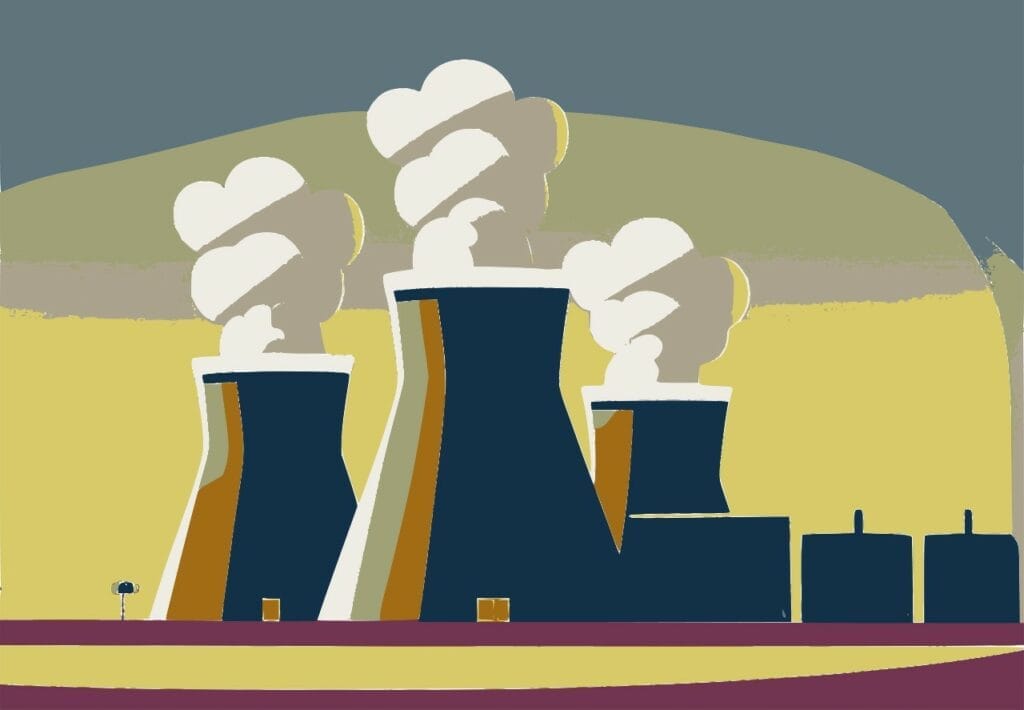This post originally appeared at https://www.badgerinstitute.org/more-headway-on-increasing-nuclear-power/
The Biden administration’s climate adviser told a “sustainability conference” this week that the president wants to reactivate decommissioned nuclear power plants.

Investors already have announced plans to restart the dormant reactors at two closed plants, in Michigan and Pennsylvania. Asked if any additional plants could be restarted, White House climate adviser Ali Zaidi told the Reuters IMPACT conference in New York Monday, “We’re working on it in a very concrete way.”
The news follows a Department of Energy report in September that examined the potential for adding new reactors at currently operating nuclear power plant sites or at recently closed — but still intact — nuclear power plants.
That differs from the sort of restarts that Zaidi discussed, centering instead on adding new, “advanced” reactors at sites that already have infrastructure and accepting neighbors.
That report tallied up space for new reactors in Wisconsin at operating and closed plants, and while it did not name either, the only such sites in Wisconsin would be the state’s one operating nuclear plant, the Point Beach Nuclear Plant, north of Two Rivers, and its one closed but intact plant, Kewaunee Power Station, 4 miles to the north. The report said either site could accommodate a new reactor of about 1,100 megawatts, approximately the current output of Point Beach. One such reactor at each site would about triple the power available to Wisconsinites from nuclear generation, which now provides about 16% of the state’s electricity.
One of the two plants for which reopening is already under way is across Lake Michigan from Kenosha — the Palisades Nuclear Generating Station. The plant was turned off in 2022, just as Michigan’s governor had a change of heart about nuclear power’s role as the state faces struggles to generate enough electricity amid new demands for power and the decommissioning of coal- and gas-fired power sources.
Wisconsin faces similar dynamics as demand for electricity will likely increase due to hopes for growth in data centers, as well as from efforts to make consumers turn to electric cars, and possibly efforts to push electric home heating as a replacement for natural gas. Meanwhile, utilities are phasing out the former workhorse of their generating mix, coal-fired power plants, in response to federal regulations and Evers’ demand that Wisconsin cease emitting any carbon dioxide from power plants by 2050 in favor of intermittent sources such as wind and solar.
Zaidi also told the conference this week that the administration hopes to spur the adoption of “small modular reactors,” a technology that has sparked interest from Wisconsin’s rural electric cooperative market. Such reactors, which could be efficiently manufactured in factories rather than being expensively custom-built, have drawn interest from the U.S. Navy for powering naval bases. “SMR is a technology that is not a decades-away play,” Zaidi reportedly said. “It’s one that companies in the United States are looking to deploy in this decade.”
Any use or reproduction of Badger Institute articles or photographs requires prior written permission. To request permission to post articles on a website or print copies for distribution, contact Badger Institute President Mike Nichols at mike@badgerinstitute.org or 262-389-8239.
Submit a comment
“*” indicates required fields
/* = 0;if(!is_postback){return;}var form_content = jQuery(this).contents().find(‘#gform_wrapper_21’);var is_confirmation = jQuery(this).contents().find(‘#gform_confirmation_wrapper_21’).length > 0;var is_redirect = contents.indexOf(‘gformRedirect(){‘) >= 0;var is_form = form_content.length > 0 && ! is_redirect && ! is_confirmation;var mt = parseInt(jQuery(‘html’).css(‘margin-top’), 10) + parseInt(jQuery(‘body’).css(‘margin-top’), 10) + 100;if(is_form){jQuery(‘#gform_wrapper_21’).html(form_content.html());if(form_content.hasClass(‘gform_validation_error’)){jQuery(‘#gform_wrapper_21’).addClass(‘gform_validation_error’);} else {jQuery(‘#gform_wrapper_21’).removeClass(‘gform_validation_error’);}setTimeout( function() { /* delay the scroll by 50 milliseconds to fix a bug in chrome */ jQuery(document).scrollTop(jQuery(‘#gform_wrapper_21’).offset().top – mt); }, 50 );if(window[‘gformInitDatepicker’]) {gformInitDatepicker();}if(window[‘gformInitPriceFields’]) {gformInitPriceFields();}var current_page = jQuery(‘#gform_source_page_number_21’).val();gformInitSpinner( 21, ‘https://e74sq7k37a8.exactdn.com/wp-content/plugins/gravityforms/images/spinner.svg’, true );jQuery(document).trigger(‘gform_page_loaded’, [21, current_page]);window[‘gf_submitting_21’] = false;}else if(!is_redirect){var confirmation_content = jQuery(this).contents().find(‘.GF_AJAX_POSTBACK’).html();if(!confirmation_content){confirmation_content = contents;}jQuery(‘#gform_wrapper_21’).replaceWith(confirmation_content);jQuery(document).scrollTop(jQuery(‘#gf_21’).offset().top – mt);jQuery(document).trigger(‘gform_confirmation_loaded’, [21]);window[‘gf_submitting_21’] = false;wp.a11y.speak(jQuery(‘#gform_confirmation_message_21’).text());}else{jQuery(‘#gform_21’).append(contents);if(window[‘gformRedirect’]) {gformRedirect();}}jQuery(document).trigger(“gform_pre_post_render”, [{ formId: “21”, currentPage: “current_page”, abort: function() { this.preventDefault(); } }]); if (event && event.defaultPrevented) { return; } const gformWrapperDiv = document.getElementById( “gform_wrapper_21” ); if ( gformWrapperDiv ) { const visibilitySpan = document.createElement( “span” ); visibilitySpan.id = “gform_visibility_test_21”; gformWrapperDiv.insertAdjacentElement( “afterend”, visibilitySpan ); } const visibilityTestDiv = document.getElementById( “gform_visibility_test_21” ); let postRenderFired = false; function triggerPostRender() { if ( postRenderFired ) { return; } postRenderFired = true; jQuery( document ).trigger( ‘gform_post_render’, [21, current_page] ); gform.utils.trigger( { event: ‘gform/postRender’, native: false, data: { formId: 21, currentPage: current_page } } ); if ( visibilityTestDiv ) { visibilityTestDiv.parentNode.removeChild( visibilityTestDiv ); } } function debounce( func, wait, immediate ) { var timeout; return function() { var context = this, args = arguments; var later = function() { timeout = null; if ( !immediate ) func.apply( context, args ); }; var callNow = immediate && !timeout; clearTimeout( timeout ); timeout = setTimeout( later, wait ); if ( callNow ) func.apply( context, args ); }; } const debouncedTriggerPostRender = debounce( function() { triggerPostRender(); }, 200 ); if ( visibilityTestDiv && visibilityTestDiv.offsetParent === null ) { const observer = new MutationObserver( ( mutations ) => { mutations.forEach( ( mutation ) => { if ( mutation.type === ‘attributes’ && visibilityTestDiv.offsetParent !== null ) { debouncedTriggerPostRender(); observer.disconnect(); } }); }); observer.observe( document.body, { attributes: true, childList: false, subtree: true, attributeFilter: [ ‘style’, ‘class’ ], }); } else { triggerPostRender(); } } );} );
/* ]]> */
The post More headway on increasing nuclear power appeared first on Badger Institute.
